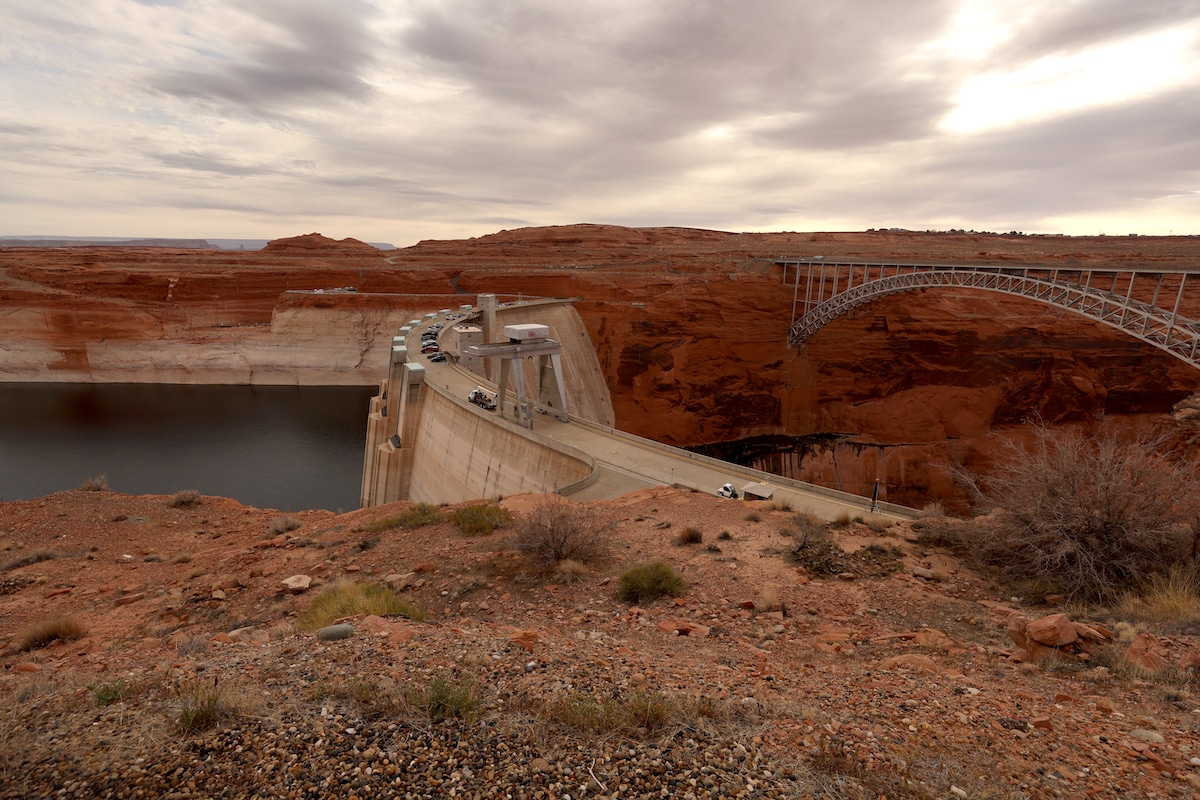Products You May Like
The Glen Canyon Dam at Lake Powell in Page, Arizona on March 28, 2022. Justin Sullivan / Getty Images
 Why you can trust us
Why you can trust us
Founded in 2005 as an Ohio-based environmental newspaper, EcoWatch is a digital platform dedicated to publishing quality, science-based content on environmental issues, causes, and solutions.
A new report from Utah Rivers Council, the Glen Canyon Institute and the Great Water Basin Network is calling for government action to repair plumbing in the Glen Canyon Dam. Without action, the report warns that it could lead to parts of the Colorado River — namely, the iconic section that runs through the Grand Canyon — to dry up.
Glen Canyon Dam is located along the Colorado River and upriver of the Grand Canyon. The 50-year-old dam is also responsible for creating Lake Powell, which has water levels that recently fell to a record low and is only 46 feet away from being unable to produce hydropower. The minimum water level necessary is 3,490 feet, and the lake is now at 3,536 feet above sea level, just 25% of its capacity.
With water levels low in the lake, Glen Canyon Dam cannot move water downriver, where it is supposed to flow through Lake Mead and the Grand Canyon.
“This is because the hydropower penstocks are the primary means of complying with the water delivery obligations of the 100-year-old Colorado River Compact, yet they will be unusable at just 45 feet below current water levels,” the report explained.
The report noted that the antique plumbing of the dam is part of the problem, with pipes that aren’t equipped for generating hydropower or effectively moving larger amounts of water. Without proper infrastructure, the dam may impact utility customers that depend on the hydropower for electricity.
Further, the low water levels could impact farmers who rely on water for irrigation and may even leave many municipalities around the southwestern U.S. and Mexico short on water supply. As reported by E&E News, if the water drops below levels required to generate hydropower, the dam could release a maximum of 3.5 million acre-feet of water. The 1922 Colorado River Compact divides the river resources among seven states, with each supposed to receive 7.5 million acre-feet of water based on a 16-million-acre-foot river. Current estimates say the river could be just around 11 million acre-feet.
The report authors are urging the federal government to fund a redesign and construction for a retrofit of the dam in order to “avoid a water delivery crisis.” They request urgent action, as they estimate the dam could stop moving water as soon as 2025 without improvements.
A spokeswoman for the Bureau of Reclamation said there is now $2 million to go toward studying ways for the dam to deliver more water and power.
“For the sake of our future, the time to act is now,” the report concluded.
Subscribe to get exclusive updates in our daily newsletter!
By signing up, you agree to the Terms of Use and Privacy Policy & to receive electronic communications from EcoWatch Media Group, which may include marketing promotions, advertisements and sponsored content.
